Star Wars Jedi Survivor: All 5 Stances & Playstyle
Diversify Cal Kestis's combat by switching between 5 unique combat stances in Star Wars Jedi Survivor.

In Star Wars Jedi: Survivor, players can expect a dynamic and immersive combat experience with the introduction of stances. These five distinct combat styles – single-blade, Double-Bladed, Dual Blade, Cross Guard (Heavy), and Blaster Stance – offer unique playstyles and strategic options. Players will seamlessly switch between stances during combat, customize abilities through Stance Skill Trees, and adapt to varied challenges throughout the plot.
- Stances in Star Wars Jedi: Survivor refers to five unique combat styles that determine how Cal Kestis wields his lightsaber and approaches battles.
- The five stances are Single Blade, Double-Bladed, Dual Blade, Cross Guard (Heavy), and Blaster, and here is the playstyle each offers:
- Single Blade Stance: Focused on precision and agility, ideal for one-on-one duels and fast-moving enemies.
- Double-Bladed Stance: Designed for crowd control, engaging multiple enemies with a double-sided lightsaber.
- Dual Blade Stance: Balanced offense and defense with a lightsaber in each hand, effective in a wide range of combat situations.
- Cross Guard (Heavy) Stance: Powerful, slow swings with a hilted lightsaber, ideal for heavily armored foes or strong defenses.
- Blaster Stance: Versatile approach with a lightsaber and blaster, catering to both ranged and close-quarters combat.
What Are Stances In Star Wars Jedi: Survivor?

In Star Wars Jedi: Survivor, stances refer to the various combat styles and techniques employed by the main character, Cal Kestis. These stances determine the way Cal wields his lightsaber and approaches battles, offering a diverse and engaging gameplay experience.
In total, there are five unique stances available in Jedi Survivor:
- Single Blade Stance: Focusing on precision and agility, this stance allows Cal to perform swift, accurate strikes with a single lightsaber blade.
- Double-Bladed Stance: Ideal for crowd control, the double-bladed stance provides Cal with a broader range of attack, enabling him to tackle multiple enemies simultaneously.
- Dual Blade Stance: With a lightsaber in each hand, Cal can unleash a flurry of attacks in this stance, blending offense and defense for a balanced combat approach.
- Cross Guard (Heavy) Stance: Utilizing a hilted lightsaber, this stance concentrates on dealing significant damage with powerful but slower swings, requiring strategic timing and positioning.
- Blaster Stance: Combining the use of a blaster and a lightsaber, this versatile stance offers Cal the ability to engage enemies both from a distance and up close, adapting to various combat scenarios.
How To Change Stances?
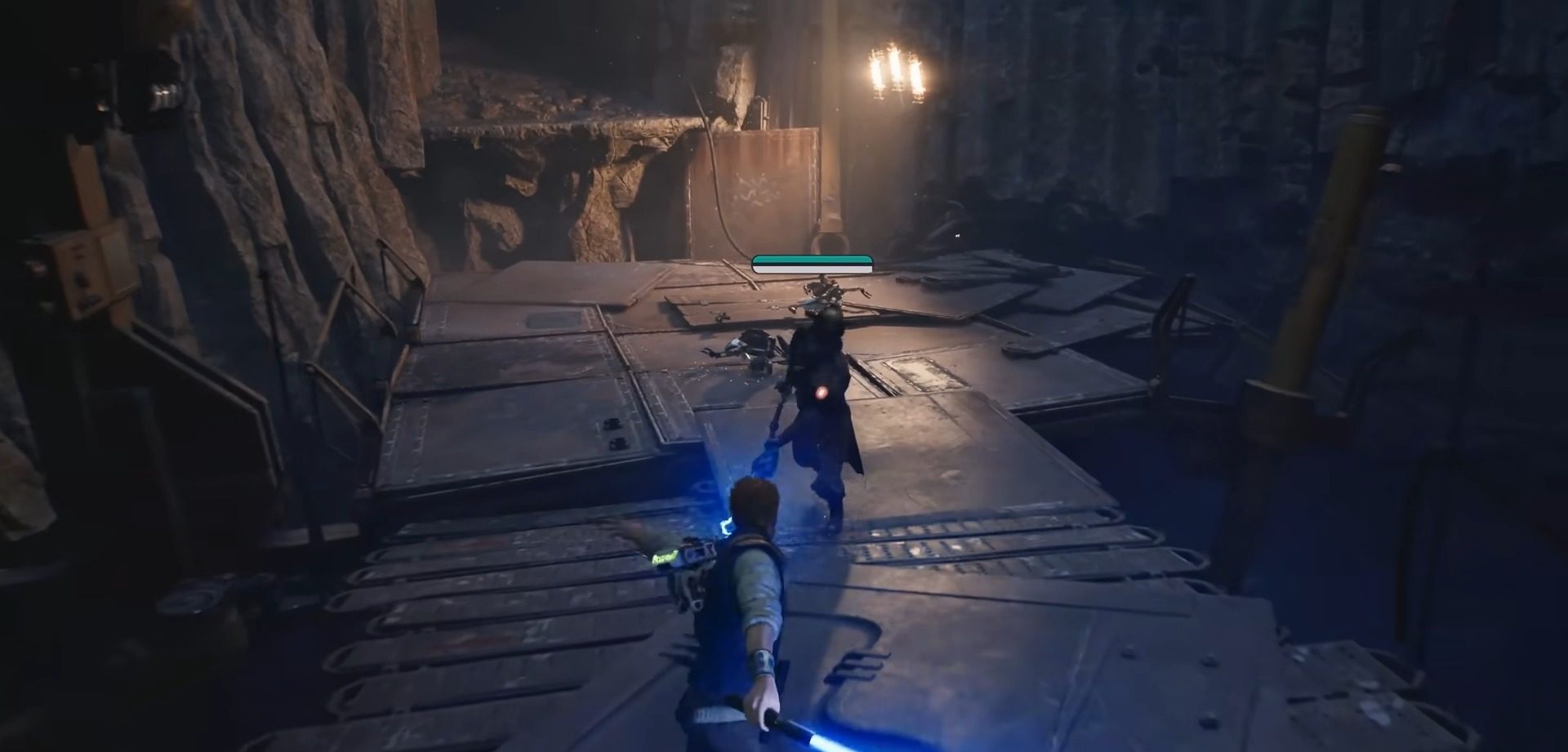
- To switch stances, players will need to locate and interact with Meditation Points scattered throughout the game world.
- These points serve as resting areas where Cal can recover, save his progress, and allocate skill points.
- Additionally, they provide the opportunity to change stances and fine-tune the player’s combat style.
Upon reaching a Meditation Point, players can access the stance selection menu, where they can choose from the five available stances: Single Blade, Double-Bladed, Dual Blade, Cross Guard (Heavy), and Blaster. Each stance comes with its unique attributes and advantages, so players can select the one that best suits the upcoming challenges and their preferred playstyle.
This feature further enhances the game’s strategic depth and encourages players to experiment with different combinations to find the most effective approach for each encounter.
All Five Stances Playstyle In Jedi Survivor
Each of the five stances presents a unique playstyle, offering players the opportunity to adapt their approach to combat and experiment with various strategies. Let’s delve into the characteristics and playstyle of each stance:
Single Blade Stance
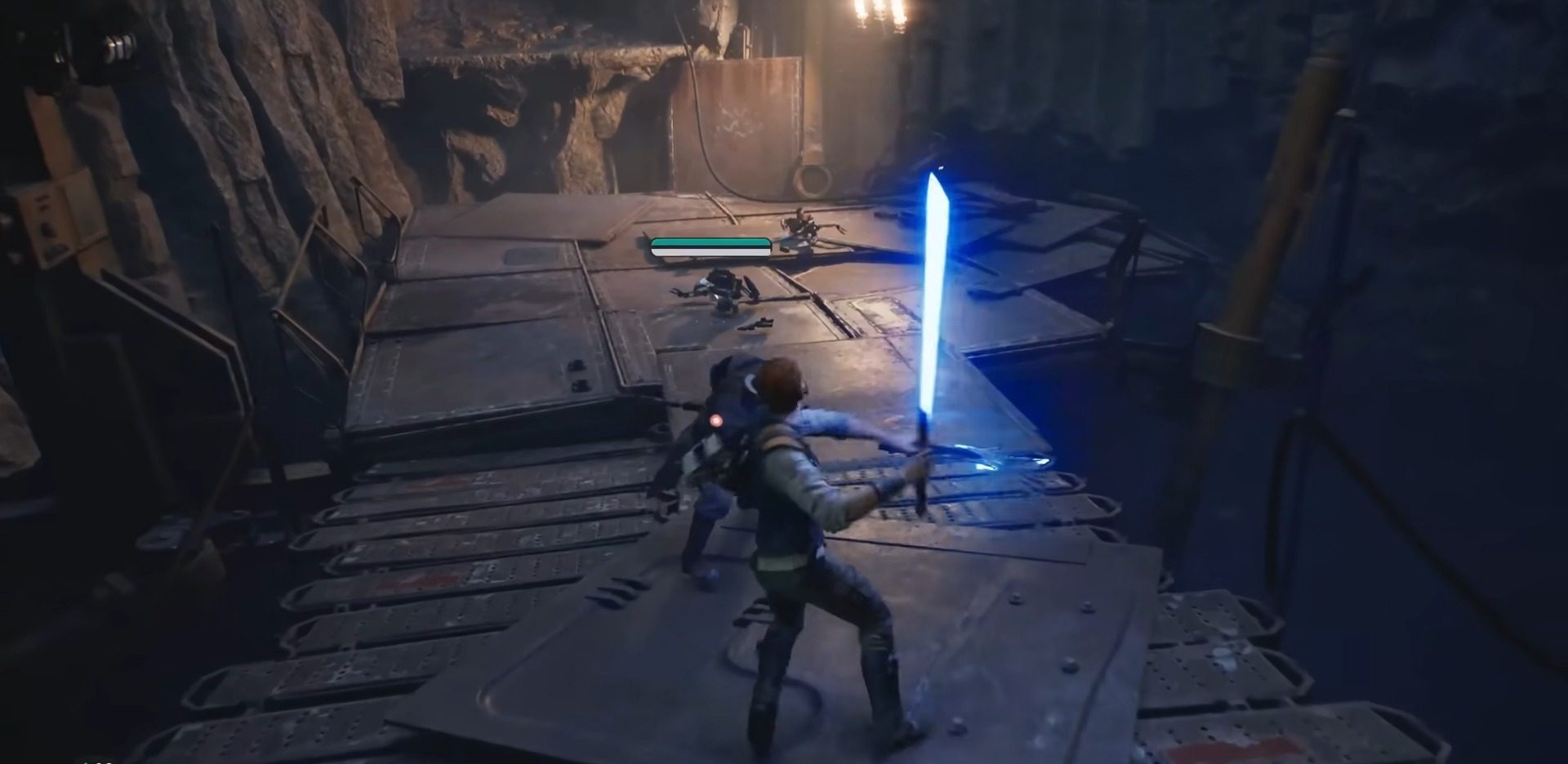
Emphasizing precision and agility, this stance allows players to focus on quick, accurate strikes with a single lightsaber blade. Ideal for one-on-one duels and encounters with fast-moving enemies, the Single Blade Stance rewards players who can anticipate enemy movements and exploit openings in their defenses. Timing and reflexes are crucial when utilizing this stance to maximize its effectiveness.
Double-Bladed Stance
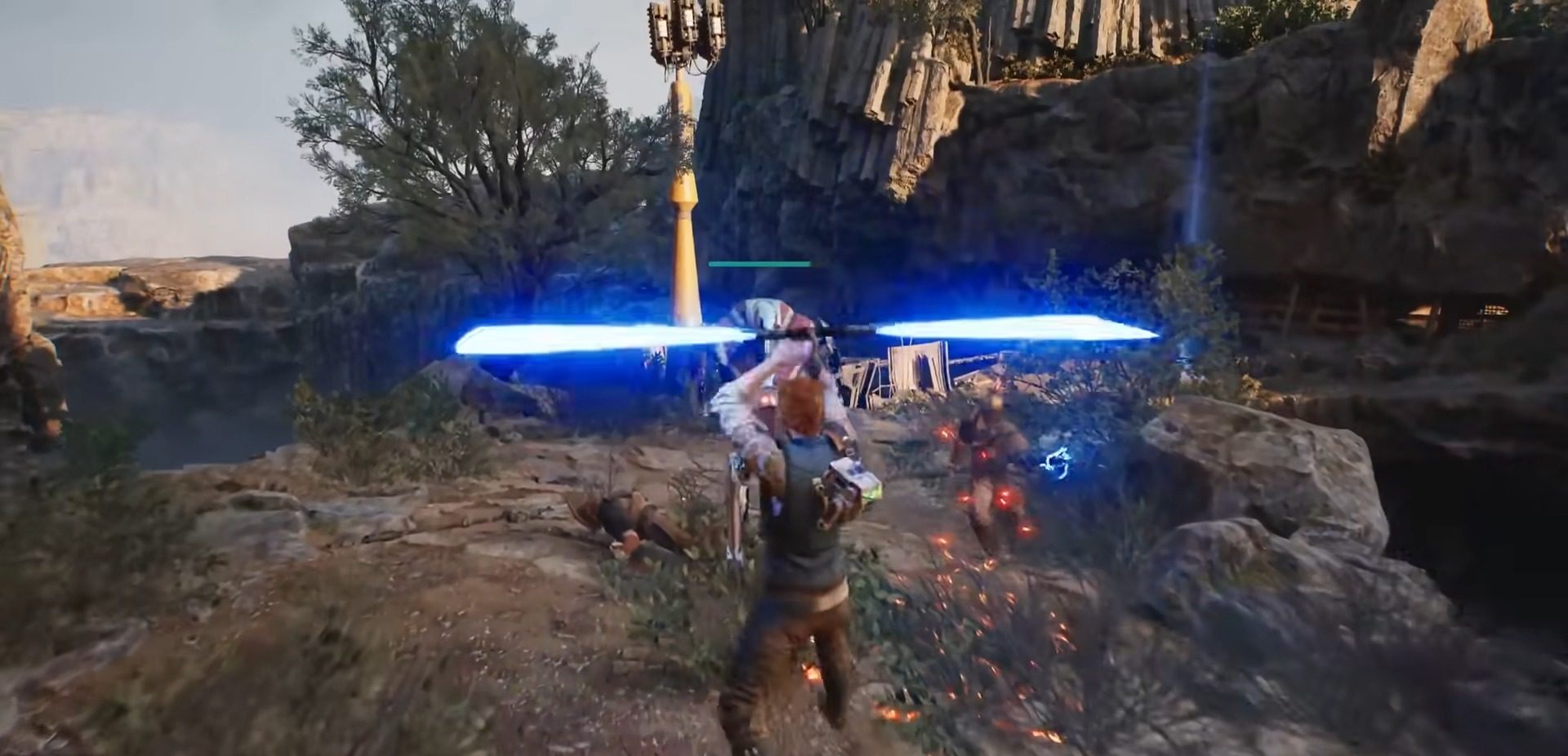
Designed for crowd control, the Double-Bladed Stance employs a double-sided lightsaber to engage multiple enemies at once. This playstyle is well-suited for situations where players face large groups of weaker opponents, as the broad range of attack allows for swift and efficient dispatching. However, the wide-arcing swings can leave players vulnerable to counterattacks, so careful positioning and situational awareness are essential.
Dual Blade Stance
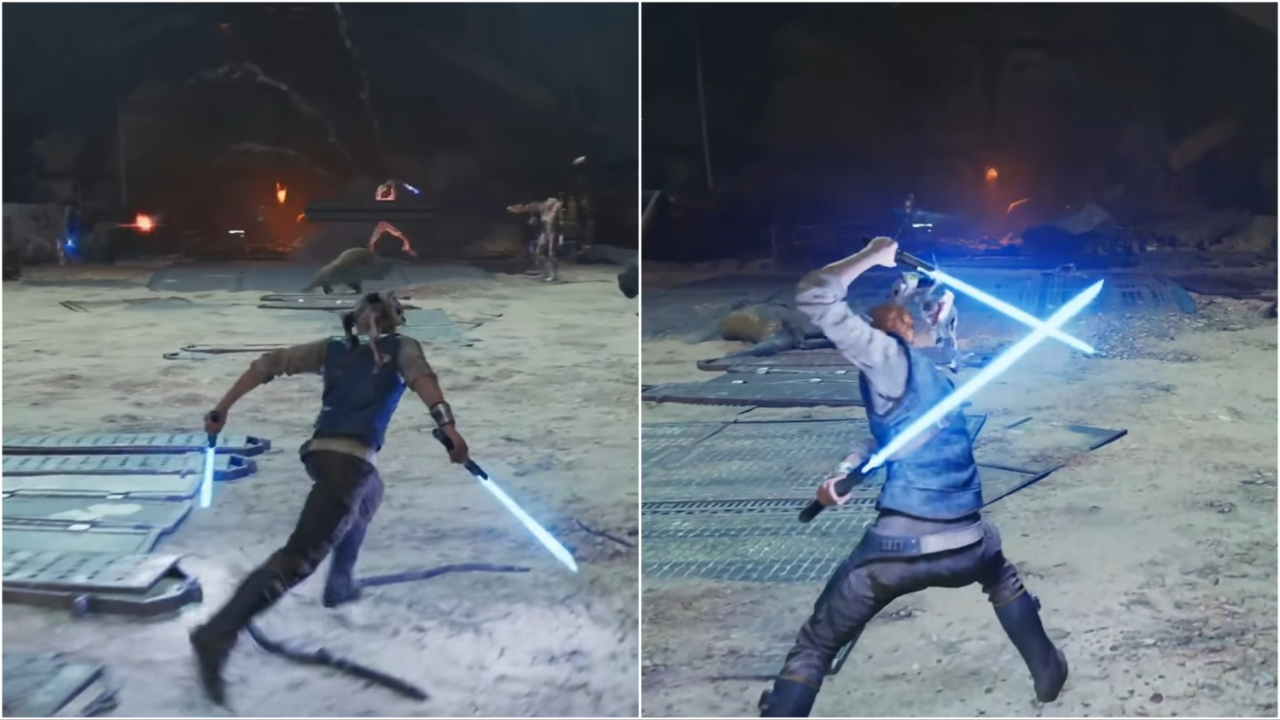
Wielding a lightsaber in each hand, the Dual Blade Stance offers a balanced mix of offense and defense. This playstyle enables players to deliver rapid attacks while maintaining a strong defensive posture. The versatility of the Dual Blade Stance makes it effective in a wide range of combat situations, and it rewards players who can adapt to the ebb and flow of battle.
Cross Guard (Heavy) Stance
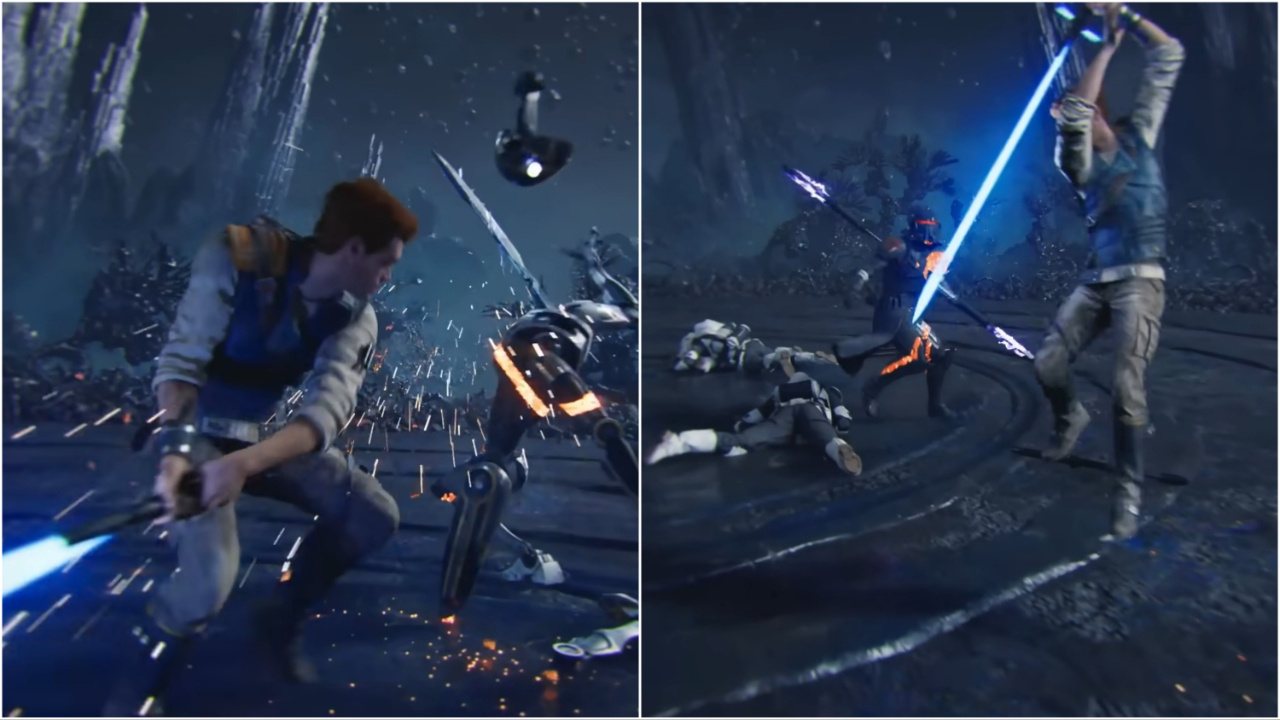
Featuring a hilted lightsaber, the Cross Guard Stance focuses on powerful, slow swings capable of dealing significant damage. Players adopting this playstyle must master the art of timing and positioning, as the slow attack speed leaves them vulnerable to faster enemies. The Cross Guard Stance is particularly effective against heavily armored foes or those with strong defenses, as its devastating strikes can penetrate their defenses and deliver crushing blows.
Blaster Stance
Combining a lightsaber and a blaster, the Blaster Stance offers a highly adaptable playstyle that caters to both ranged and close-quarters combat. Players can engage enemies from a distance with blaster fire and then switch to their lightsaber when opponents close in. This playstyle rewards players who can seamlessly transition between ranged and melee attacks, effectively managing distance and exploiting enemy weaknesses.
Stance Skill Trees In Jedi Survivor
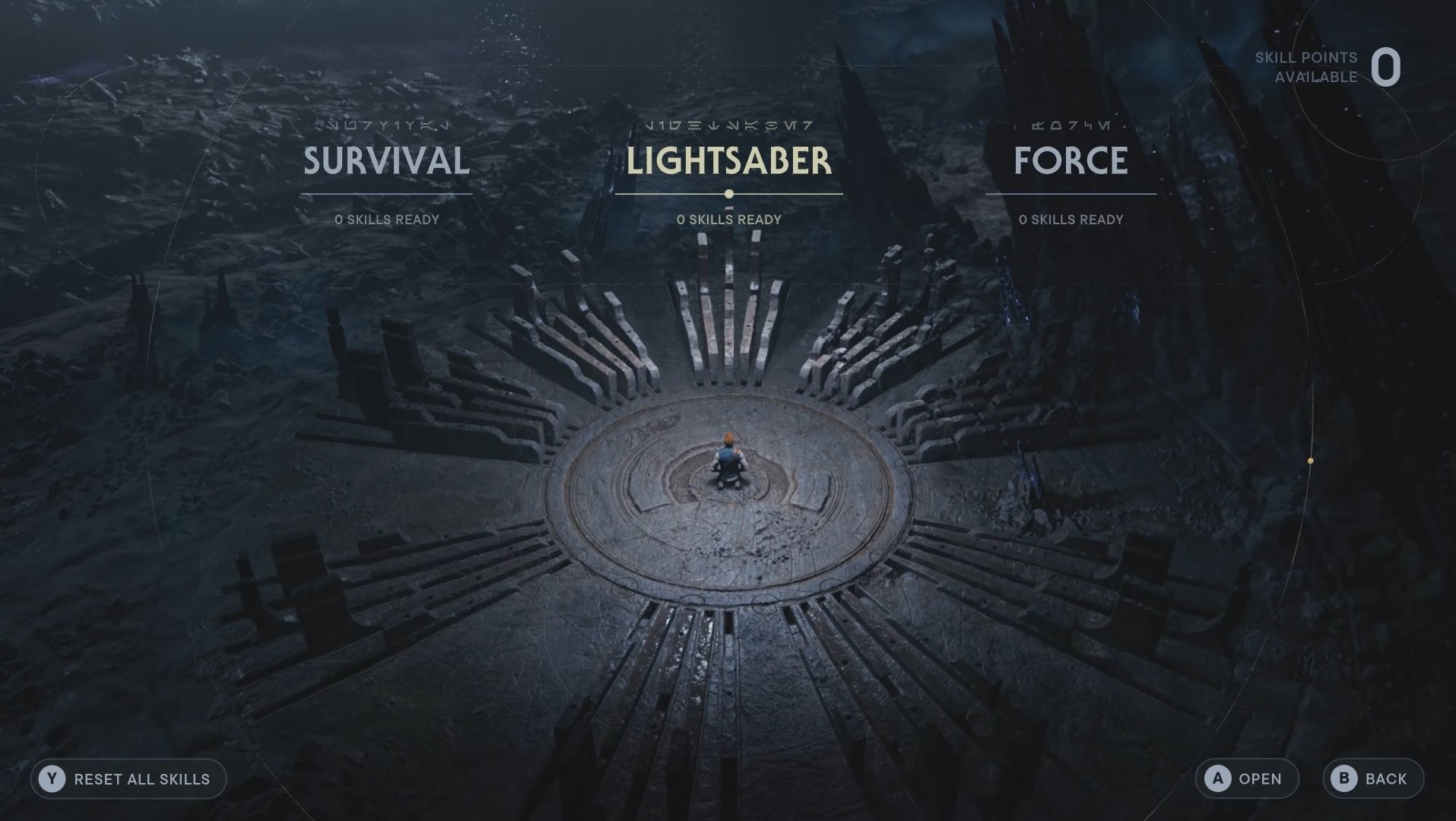
In Star Wars Jedi: Survivor, the Stance Skill Trees play an integral role in customizing and enhancing the player’s combat abilities. Each of the five stances—Single Blade, Double-Bladed, Dual Blade, Cross Guard (Heavy), and Blaster—features a separate skill tree that allows players to unlock and upgrade unique skills tailored to that particular stance.
- As players progress through Jedi Survivor, they will earn skill points that can be allocated within these stance-specific skill trees.
- By investing in these trees, players can unlock new abilities, improve existing skills, and fine-tune their preferred playstyle.
- This customization enables players to create a personalized combat experience, allowing them to excel in their chosen stance and adapt to the game’s varied challenges.
The inclusion of stance skill trees, along with the separate skill trees for Force powers and survival skills, adds depth and variety to the combat system in Star Wars Jedi: Survivor. By offering players the chance to customize and evolve their abilities, the game encourages experimentation and rewards strategic investment, resulting in a rich and engaging gameplay experience.
Force Powers & Survival Skill Trees
In addition to the stance skill trees, Star Wars Jedi: Survivor also includes skill trees for Force powers and survival skills.
- The Force powers skill tree focuses on enhancing Cal’s connection to the Force, granting him access to powerful abilities that can turn the tide of battle.
- Players can unlock and upgrade skills such as Force Push, Force Pull, and Force Slow, providing them with a versatile toolkit to complement their chosen stance.
The survival skills skill tree, on the other hand, is centered around improving Cal’s overall resilience and survivability.
- By investing in the Survival skill tree, players can increase Cal’s health, expand his Force meter, and unlock passive abilities that bolster the defenses or enhance Cal’s mobility.
- These upgrades ensure that Cal is better equipped to face the challenges that lie ahead, regardless of his chosen stance.
Wrapping Up
In the captivating world of Star Wars Jedi: Survivor, the importance of stances cannot be overstated. All five diverse combat styles or stances offer a rich and engaging gameplay experience. The stances elevate players’ strategic choices, allowing them to adapt and excel in various challenges throughout the game. Emphasizing experimentation and versatility, the stancing system in Jedi Survivor transforms combat into a thrilling and dynamic adventure, immersing players in the heart of the action.
Before moving on to the next topic, read our Star Wars Jedi: Survivor All Voice Actors, Jedi Survivor PC System Requirements, and all game edition guides.
Thanks! Do share your feedback with us. ⚡
How can we make this post better? Your help would be appreciated. ✍



